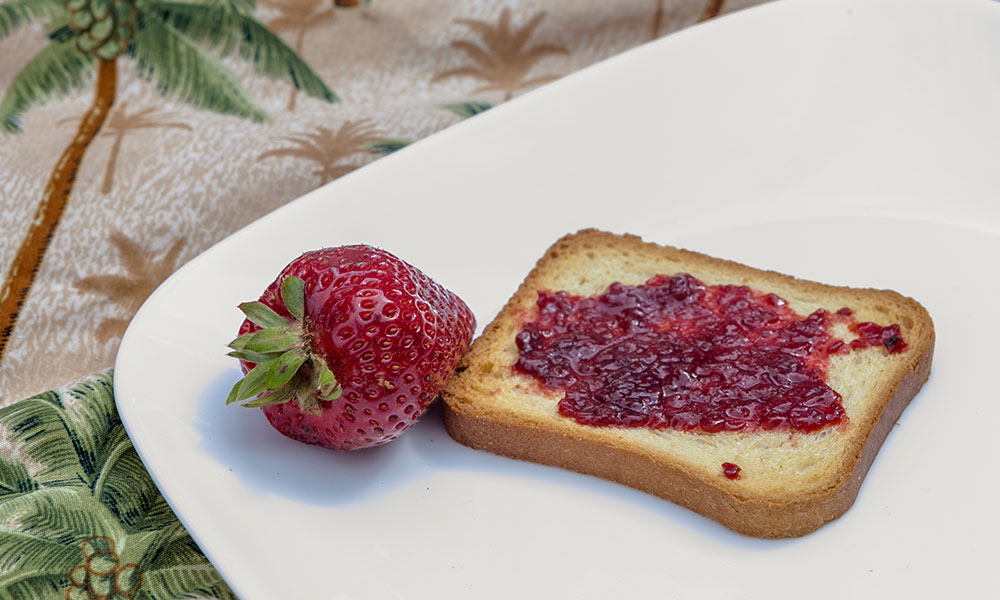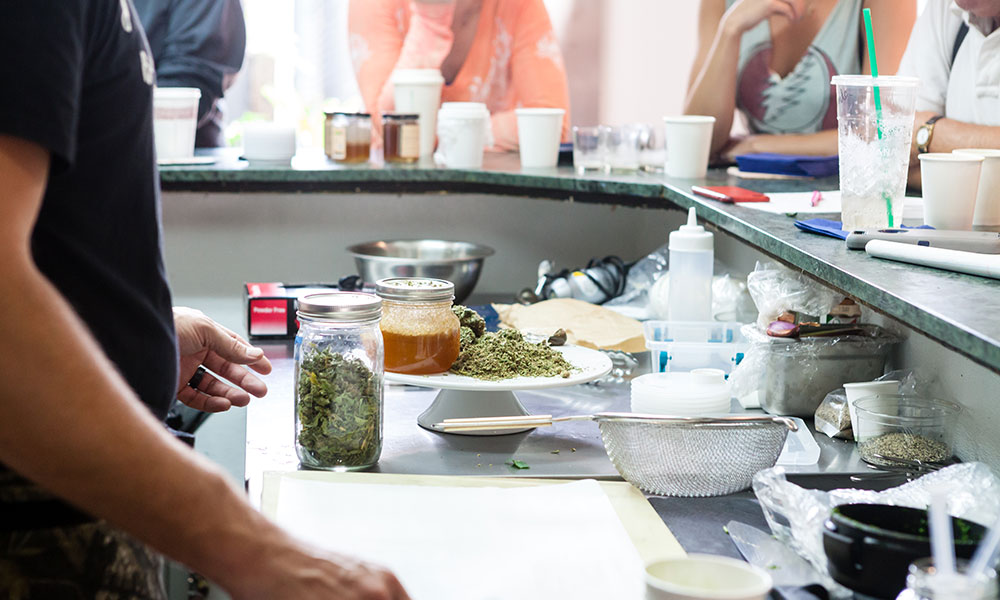Before the advent of adult-use legal dispensaries, modern edibles and licensed cannabis brands, procuring pot-infused goods was mostly a take-it-or-leave-it proposition. Let’s face it: Buying through unregulated channels doesn’t usually come with much in the way of choice, which is why plastic-wrapped cookies and brownies of dubious origin (and unknown potency) still linger in the public’s mind as the default imagery when the subject of cannabis edibles arises.
That may have been true in the past, but today, there’s a veritable grocery store’s worth of different cannabis foods, snacks, beverages and tinctures available—all thoroughly tested, clearly labeled and packaged safely to protect children and pets. In 2018, California’s official entry into adult-use cannabis sales further jumpstarted what was then an already-burgeoning movement towards a wide new world of edibles that truly runs the gamut from gummies to gourmet cuisine.
However, in order to fully appreciate the current menu that’s widely available, one must understand how edibles work. For instance, why is igniting cannabis flower required to enjoy the benefits of cannabinoids while no fire is needed for edibles? And why does smoking or vaping weed get enthusiasts high almost instantly, while eating edibles can take up to an hour or more for the peak onset of effects to hit?
The answers reside within the human digestive system, as well with as a vital process known as decarboxylation. Hungry for more?

Eating vs. Smoking
The scientific nuances of cannabis can often feel overwhelming, but thankfully, when it comes to edibles, the process is fairly straight-forward.
The key difference with eating or drinking cannabis (as opposed to smoking it) is that the cannabinoids which will ultimately cause feelings of being stoned, must first travel through the stomach and liver before reaching the body’s bloodstream. By contrast, smoking or vaping cannabis sends those same cannabinoids directly into the bloodstream, which explains why it takes longer for the effects from an edible to kick in.
But there’s another crucial piece to this puzzle: decarboxylation. Simply put, decarboxylation is the process by which the psychoactive compounds of the cannabis plant are activated. If these compounds aren’t activated, you’re not going to feel the expected effects or get high from consuming cannabis.
When smoking cannabis, decarboxylation occurs during the ignition process, when the flame hits the flower. This reaction creates delta-9 THC, which then leads to the onset of psychoactive effects. By contrast, cannabis edibles will have already undergone this step by the time they reach dispensary shelves. Traditionally, the most common method to accomplish this is to heat cannabis buds in an oven, which ensures the flower is decarboxylated.
What’s fascinating is what happens once an edible reaches the liver. Now digested, the liver converts cannabis not into delta-9 THC, but an entirely different chemical: 11-hydroxy THC. Suggested by some studies to be more potent than delta-9 THC, this variance may explain why some individuals feel the effects of cannabis more intensely when consuming edibles.
As for the cooking process, the next step after decarboxylation is to infuse the cannabis into a fat-soluble medium such as butter or oil. Why fat-soluble? It turns out both cannabinoids and fats are both hydrophobic—neither mix with water. As a result, THC molecules will readily dissolve into lipids (fats) when heated together.
Cooking with cannabis can be easy too. Today, easy-to-follow recipes for making your own weed butter, coconut oil, honey and more can be found both online and in a growing number of cookbooks dedicated to the art of cooking cannabis. Essentially, infusion involves decarboxylated cannabis being slowly heated with your fat of choice for a set period before the excess plant matter is strained away. You’ll be left with a cannabis-infused ingredient that you can then add to just about anything you can dream up.
And that’s where the fun really starts.

An Appetite for Innovation
The age of celebrity cannabis chefs is upon us. From television series such as “Bong Appetite” to special, invite-only infused dining experiences prepared by top names in the culinary world, there’s never been a better time to love both food and weed. Incorporating everything from strain-paired courses highlighting specific terpene profiles to simple, effective and tasty recipes, a glut of information and opportunity has manifested a renaissance age of cooking with cannabis.
For proof, look no further than the local dispensary. Whereas once the shelves may have only featured a few expected sugary treats, now there are all manner of modern cannabis edibles, be it granola, popcorn, peanut butter cups or hot sauce. Additionally, a relatively new product category now storming the market is that of cannabis-infused drinks. Ranging from tonic waters and sodas to teas and non-alcoholic wines, it’s estimated that the global cannabis beverage market will surpass $2 billion in sales by 2026.
Also of note is a new wave of products featuring formulas and edibles-specific technology geared to tailor the experience of eating cannabis to the individual consumer. One such innovation is edibles billed as “fast-acting.” Using what’s known as nano-emulsification, large oil droplets are broken down into tiny particles that are small enough to mix with water in a way that enhances the cannabinoids’ overall bioavailability.
In other words, by making the size of the oil droplets smaller, it’s possible to emulsify them in water-based solutions (remember, cannabinoids are hydrophobic). The benefit of doing this is that such solutions can be absorbed through the mouth and the stomach via mucosal membranes, eliminating any need for a detour through the stomach and liver.
This is but one of several exciting new developments. The advent of numerous cannabis pantry items that can be easily incorporated into just about anything you make might just mean more people than ever are eating their weed. The age of modern cannabis edibles is just getting started.
Source link
#Guide #Modern #Cannabis #Edibles